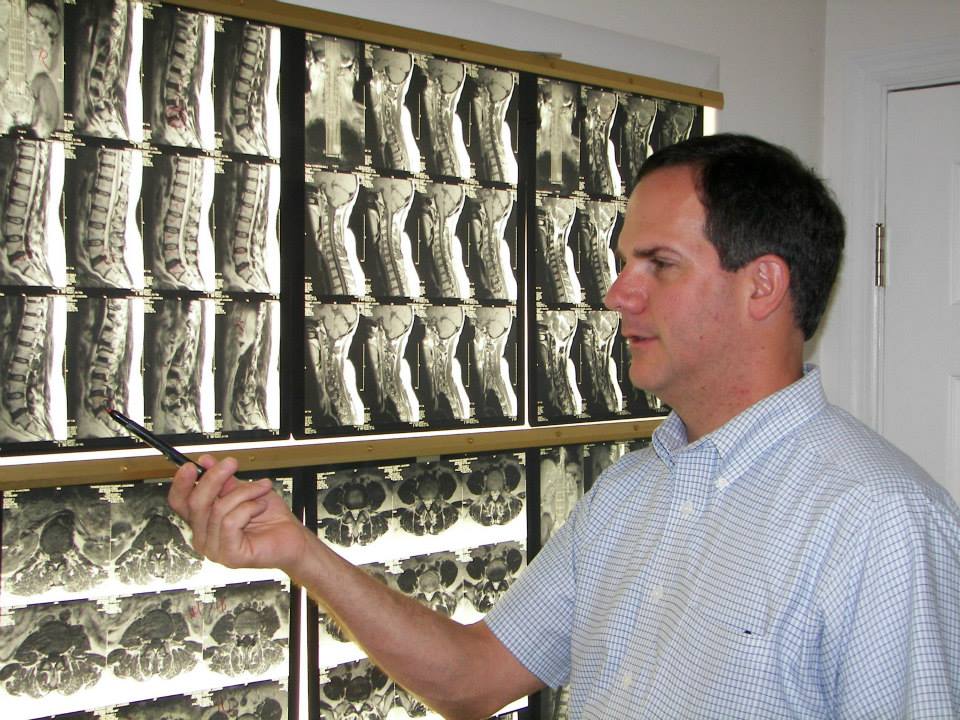Why Us?
- "No Wait Policy". All of our patients are seen immediately.
- Friendly and courteous staff.
- Professional but comfortable atmosphere.
- Large private treatment rooms.
- Convenient location.
- Secondary evaluations/opinions.
- M.D. and attorney referrals.
- Most insurance accepted; we do all the paperwork.
My Unique Approach to the Treatment of Spinal Disorders
 My active patient care approach blends rehabilitation efforts with ergonomics and prevention. It is my belief that rehabilitation efforts will not be effective without preventing the cause of the tissue irritants. No clinician will be effective in their treatment methods without removing the cause of the patient's troubles. Very few back injuries result from a single event. More commonly there is more of a cumulative trauma pathway that leads to the culminating event of a back injury.
My active patient care approach blends rehabilitation efforts with ergonomics and prevention. It is my belief that rehabilitation efforts will not be effective without preventing the cause of the tissue irritants. No clinician will be effective in their treatment methods without removing the cause of the patient's troubles. Very few back injuries result from a single event. More commonly there is more of a cumulative trauma pathway that leads to the culminating event of a back injury.
As information has accumulated that supports the use of spinal manipulative therapy for spine related disorders, a collateral body of evidence has developed that calls into question the continued use of any form of passive treatment for chronic cases. Manipulation, by definition, is a passive treatment. That is one where the patient concedes responsibility for their condition to the efforts of the provider and for which they take minimal personal responsibility. Persistent utilization of passive care promotes chronicity and physician dependence. These patients require different treatment that supports the therapeutic gains obtained from the passive care while transferring responsibility for sustaining therapeutic gains back to the patient.
The key concepts defining my style of active patient care relates to establishing an individual's skill to be able to 'maintain a maximum level of independent functioning.' I believe that in the treatment of spine related disorders, the actions of the patient are of paramount importance. Guidance is provided by the practitioner, but the burden of treatment involves what the patient does, and not what is done to the patient.
Patients are taught to take an active role in their care. The patient in no way should be 'a passive receptacle of care.'
I believe that passive care, if introduced first, has the potential of 'spoiling' the patient's chances of progressing to unassisted, active functional exercises and activities. Prolonged passive therapy increases the possibility of development of abnormal illness behaviors, practitioner dependence and chronicity. By reducing the use of passive modalities in the initial stages of treatment and maximizing patient involvement, the patient will recognize that his recovery is largely the result of his own efforts. The fear of pain and the signs of pain avoidance or illness behavior are not encouraged.
An active patient care approach implemented in the acute phase can provide the physical and psychological benefits of functional restoration and work conditioning/hardening programs that are used to treat chronic disorders. It can, thereby, prevent the need to resolve chronic conditions by not letting them develop in the first place.
The key difference between an active patient care approach and traditional conservative care is the primary emphasis is on function rather than pain relief. Patients are educated that pain perception will decrease as physical functioning improves. This focus transforms the patient from a passive, dependent recipient of care to an active participant. Consequently, the doctor's role becomes that of helper rather than healer.
I believe that my active patient care approach to spine related disorders is the optimal treatment program for the spinal pain patient.
My primary goals in patient care are:
- Identification and removal of exacerbating activities
- Restoration of function
- Reduction of pain
- Prevention of further disability
- Endurance exercises for spinal stabilizing muscles


